Jaime Margarit - Recreo Infantil
'Recreo Infantil' children's educational cards published by Jaime Margarit, Palamós (Gerona) c.1888.
Educational playing cards have of course been around for several centuries, and are not new. Jaime Margarit of Palamós, Gerona (Spain) registered a patent for a new pack of “Naipes Instructivos” (Instructional playing-cards) in 1888. As can be seen, each card shows a letter or syllable in the top corners, vowel permutations for consonants, a series of images whose names in Spanish commence with that letter or syllable, and a miniature playing card in the centre. The images include animals, geometrical forms and other edifying objects. The wrapper and Ace of Coins state that Jaime Margarit was a Bachelor of Arts and Senior Teacher. The Ace of Coins also shows two children studying with allegories of learning.
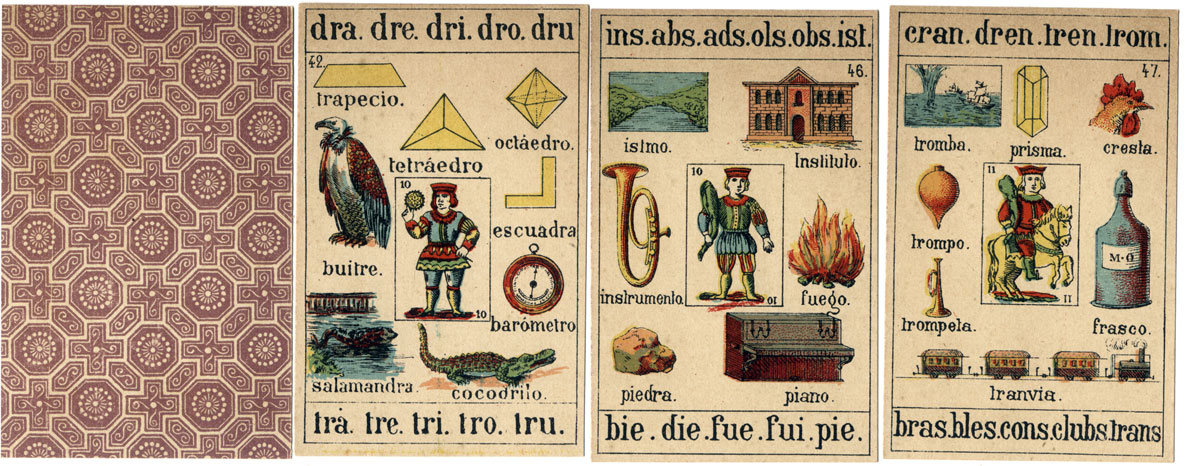
Above: 'Recreo Infantil' children's educational cards published by Jaime Margarit, Palamós (Gerona) c.1888. 48 cards in paper wrapper. Quite a lot of these decks appear for sale on the Internet in new condition, leading one to suppose that they were unsold in their day.
A great fashion for educational playing cards had spread from France to Holland, Germany and England during the seventeenth century. They have been popular ever since. For comparison see also: Logica Memorativa by Thomas Murner, 1507 • Robert Morden's Map Cards, 1676 • Arms of English Peers, 1686 • Proverbial Cards, 1698 • Mechanical Instruments, c.1700 • Geistliche Karten, 1718 • Cartes Questions-Devinettes, c.1840 • Happy Families • Jaques' Illustrated Proverbs, c.1885 • Japanese Uta Garuta • Children's Maxim Cards from Uruguay • Change for a Shilling, c.1930 • Indian Alphabetical Cards, c.1940 • Wild Flower Sevens card game, 1960 • Snip Snap, 1968 • Learn Thai Playing Cards, 2009 •
By Simon Wintle
Spain • Member since February 01, 1996 • Contact
I am the founder of The World of Playing Cards (est. 1996), a website dedicated to the history, artistry and cultural significance of playing cards and tarot. Over the years I have researched various areas of the subject, acquired and traded collections and contributed as a committee member of the IPCS and graphics editor of The Playing-Card journal. Having lived in Chile, England, Wales, and now Spain, these experiences have shaped my work and passion for playing cards. Amongst my achievements is producing a limited-edition replica of a 17th-century English pack using woodblocks and stencils—a labour of love. Today, the World of Playing Cards is a global collaborative project, with my son Adam serving as the technical driving force behind its development. His innovative efforts have helped shape the site into the thriving hub it is today. You are warmly invited to become a contributor and share your enthusiasm.

Leave a Reply
Your Name
Just nowRelated Articles
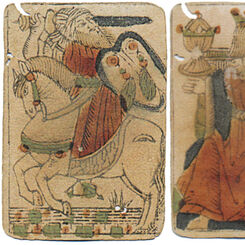
XV Century Spanish-suited playing cards
XV Century Spanish-suited playing cards with moorish influences
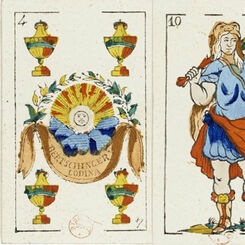
Bertschinger y Codina
Fantasy Spanish-suited playing cards by Bertschinger y Codina (Barcelona), c.1850.
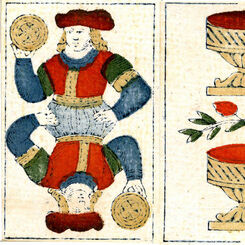
Clemente Roxas double-ended Spanish pack
Double-ended Spanish-suited playing cards published by Clemente de Roxas in Madrid, 1814.
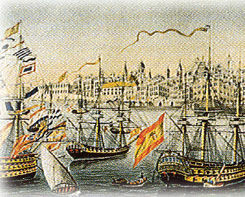
Cádiz Pattern playing cards
A popular Spanish playing card pattern widely exported to Spanish-influenced markets.
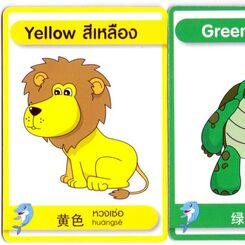
Children’s Vocabulary Cards
Thai Children’s Colour Vocabulary Cards promoting Ovaltine chocolate malt drink, 2016.
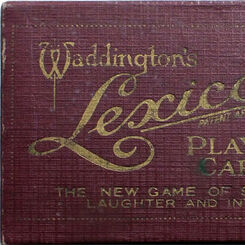
Lexicon
The summer of 1932 saw the introduction of Lexicon, when a small edition was produced and sold to te...

World Tour
World Tour Quiz Game published by Tactic Group for Finnair involves recognising flags from different...
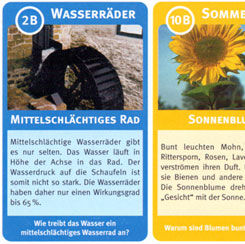
Klipp Klapp Karten
“Klipp Klapp Karten” printed by KZWP-Trefl (Poland) for Kindermuseum Oelde (Germany) in 2004
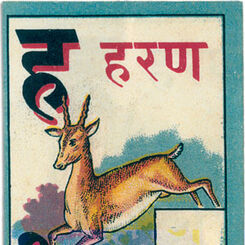
Chitrashala Press
Chitrashala Press produced some charming children's pictorial alphabet cards for early learning purp...

Children's Card Games
Children's games are distinct from ordinary playing cards, the most obvious difference being the lac...

S. Giráldez, Barcelona
Standard Spanish Catalan pattern playing cards by S. Giráldez, Barcelona, c.1905.
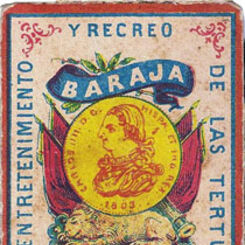
Baraja de Amor
Hijos de José Garcia Taboadela was a book-seller who also published this charming pack of lovers' fo...
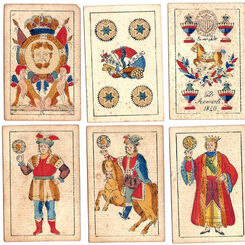
Sanmartí, 1840
Sanmartí, 1840.
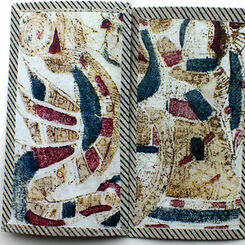
Francisco Flores
Playing cards in this style have been discovered in various parts of the world, suggesting that they...
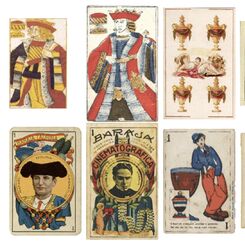
Spanish Playing Cards ~ La Baraja Española
Spain has played a pivotal role in the history of playing cards in Europe and Latin America.
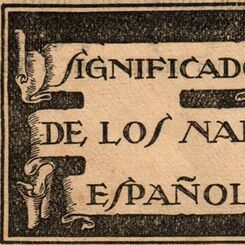
Significado de los Naipes Españoles
Cartomantic meanings of Spanish playing cards by Benita the Witch (XVI century), published by Chocol...

Zoo Comics
ZOO COMICS animated playing cards made by Litografía Ferri, Valencia (Spain), first published in 196...
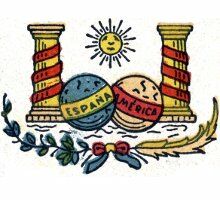
Juan Roura Catalan
Catalan type by Juan Roura, La Hispano-Americana, Barcelona (1872 - 1962).
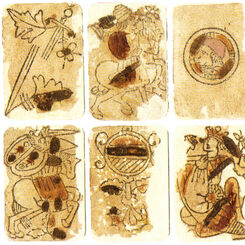
Baraja Morisca — Early XV century playing cards
Primitive Latin suited pack, dated by paper analysis as early XV century, which makes this one of th...

Hand-made Spanish Suited Playing Cards
Decks are made on two-ply pasteboard which reproduces the tactile quality of antique cards.
Most Popular
Our top articles from the past 60 days


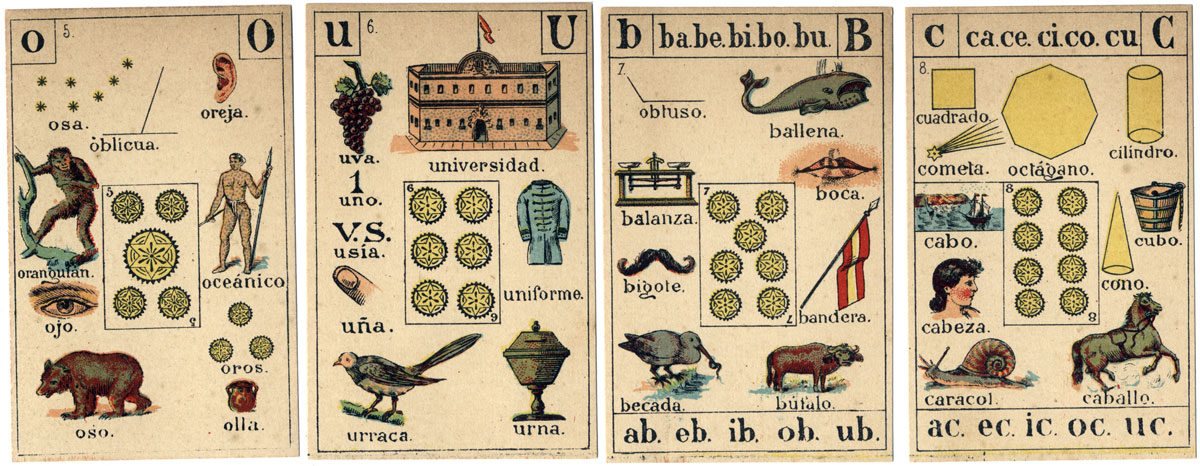
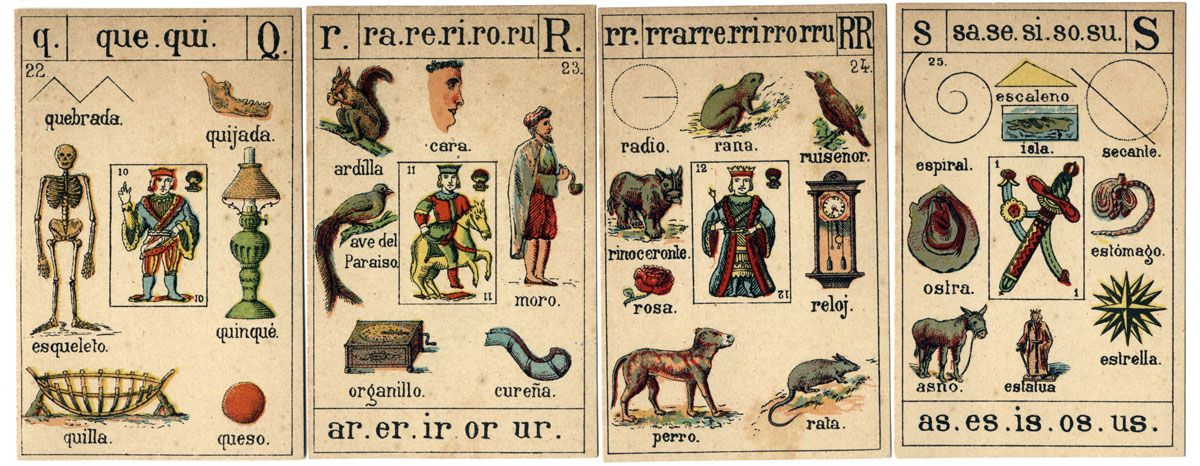
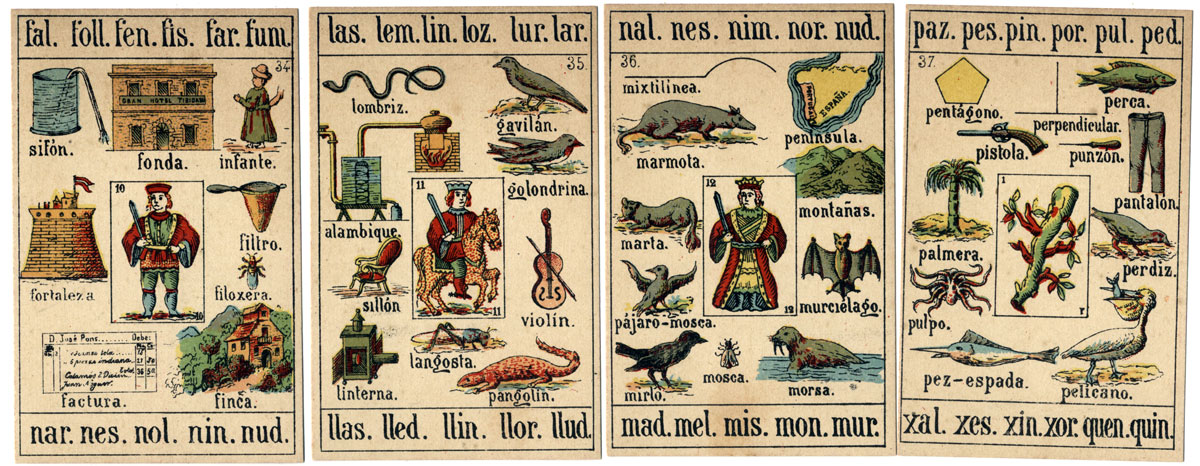
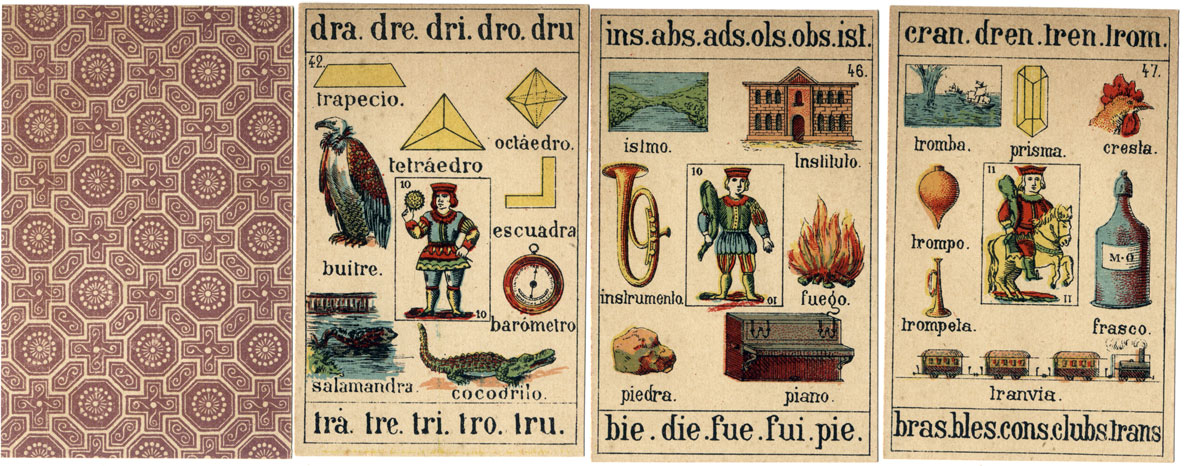
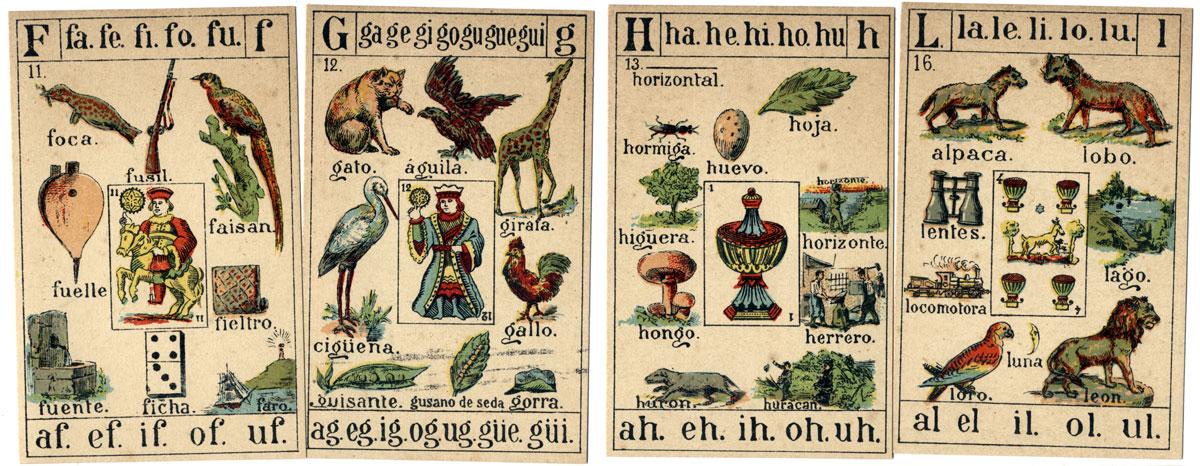
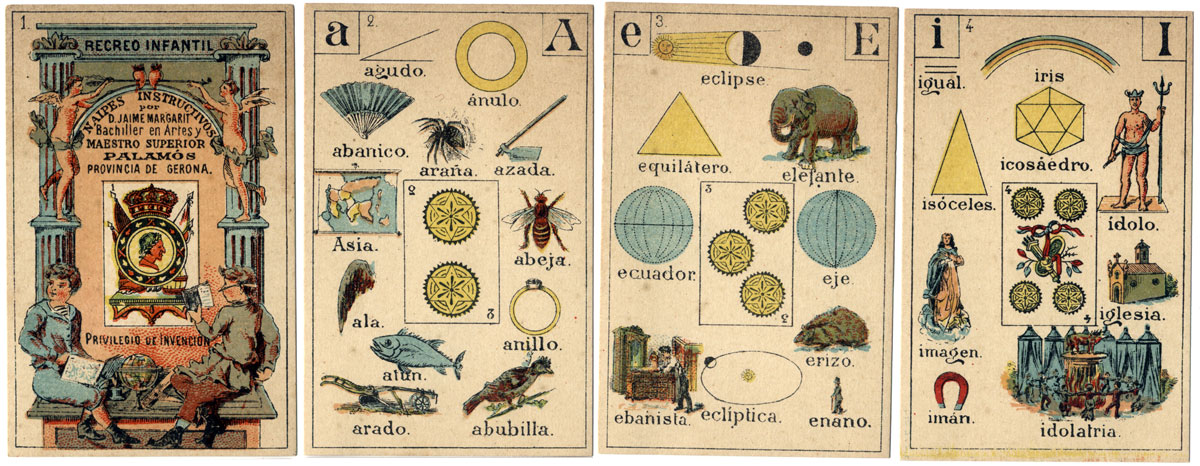
 Your comment here. Your comment here. Your comment here. Your comment here. Your comment here. Your comment here. Your comment here. Your comment here. Your comment here. Your comment here. Your comment here. Your comment here. Your comment here. Your comment here. Your comment here. Your comment here. Your comment here. Your comment here. Your comment here. Your comment here. Your comment here. Your comment here. Your comment here. Your comment here. Your comment here. Your comment here. Your comment here. Your comment here. Your comment here. Your comment here. Your comment here. Your comment here.
Your comment here. Your comment here. Your comment here. Your comment here. Your comment here. Your comment here. Your comment here. Your comment here. Your comment here. Your comment here. Your comment here. Your comment here. Your comment here. Your comment here. Your comment here. Your comment here. Your comment here. Your comment here. Your comment here. Your comment here. Your comment here. Your comment here. Your comment here. Your comment here. Your comment here. Your comment here. Your comment here. Your comment here. Your comment here. Your comment here. Your comment here. Your comment here.




















